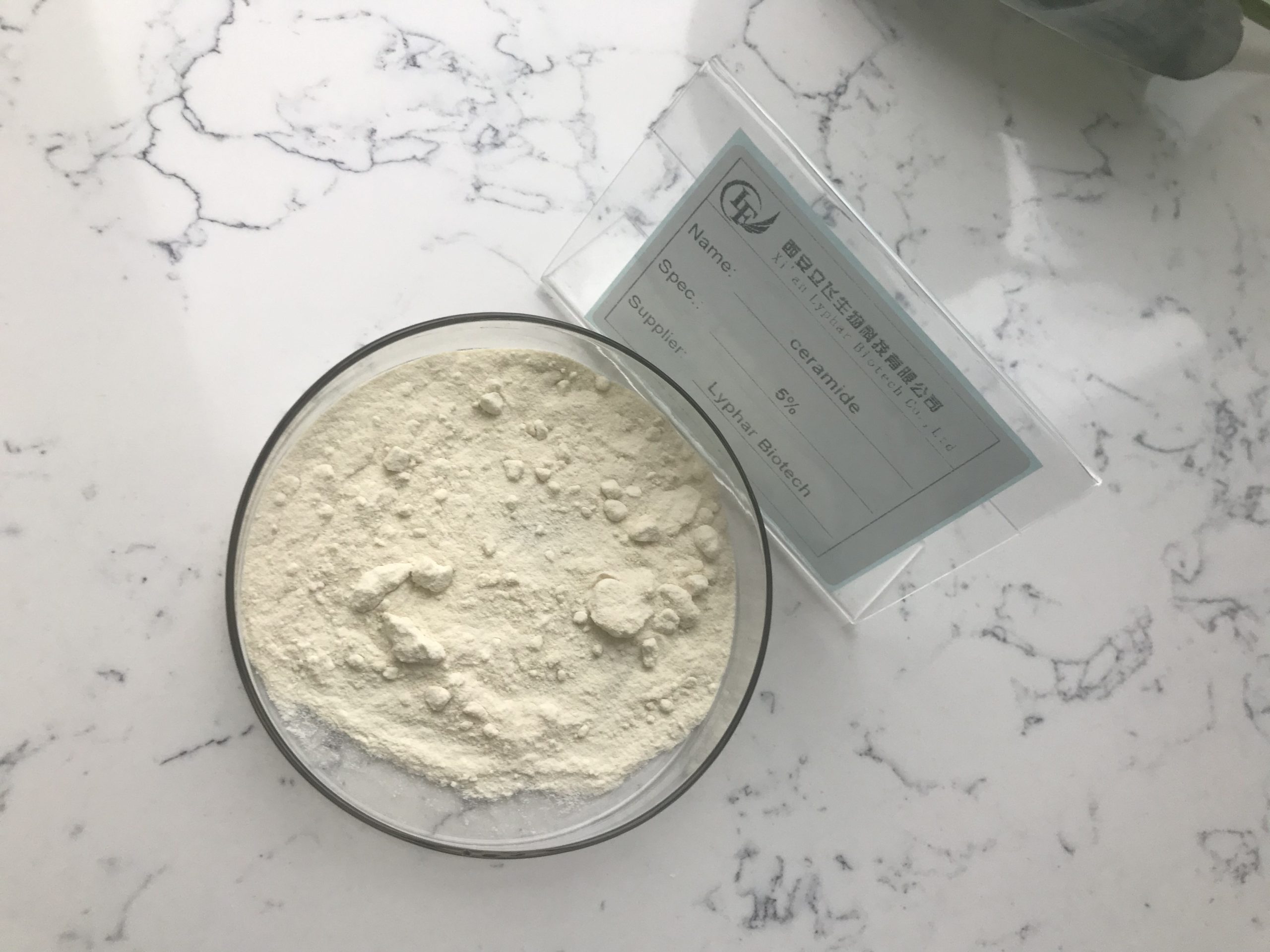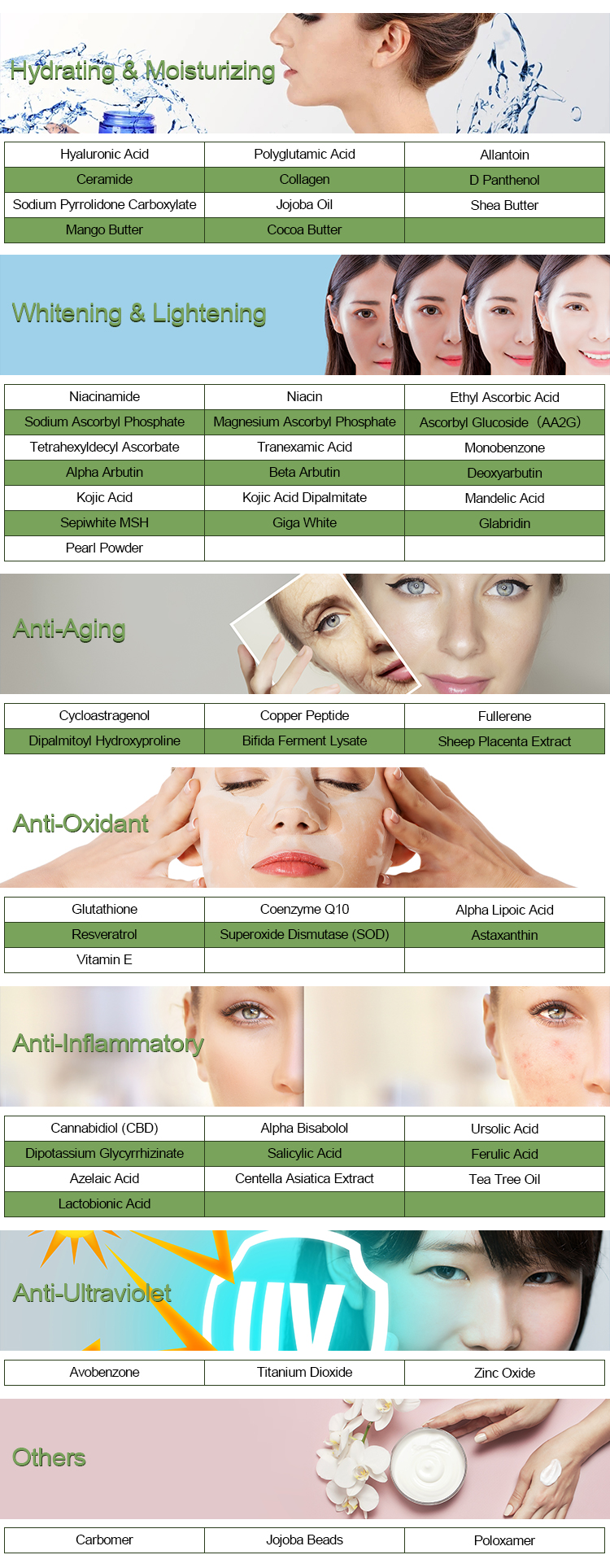Ceramide is a type of lipid (fat) found in high concentrations in the cell membranes, especially in the skin. They are essential for maintaining the skin’s moisture barrier and play a crucial role in cell signaling, particularly in regulating programmed cell death (apoptosis) and inflammation. Ceramide is classified based on their structure, function, and origin, with the following primary classifications:
1. Classification Based on Structure
- Ceramide 1 (Ceramide EOS): Composed of an omega-hydroxy fatty acid linked to a long-chain sphingosine. This ceramide is crucial for the skin’s barrier function.
- Ceramide 2 (Ceramide NS): Composed of a non-hydroxy fatty acid and sphingosine. It is important for water retention.
- Ceramide 3 (Ceramide NP): Composed of a non-hydroxy fatty acid and phytosphingosine. Known for skin-soothing properties, it is common in skincare formulations.
- Ceramide 6-II (Ceramide AP): Composed of alpha-hydroxy fatty acid and phytosphingosine. This ceramide contributes to skin hydration and mild exfoliation.
- Ceramide 9 (Ceramide EOP): Contains esterified fatty acids, which are integral for providing structure to the skin’s lipid barrier.

Each type of ceramide in this structural classification is important for maintaining different aspects of the skin’s moisture barrier and protective function.
2. Classification Based on Sphingoid Base
- Sphingosine-based Ceramides: Contain a sphingosine backbone, which is most common in the epidermis and plays a critical role in cell signaling.
- Phytosphingosine-based Ceramides: Derived from plants and is often used in skincare products due to their anti-inflammatory and soothing properties.
- 6-hydroxy-sphingosine-based Ceramides: Found in the skin and important for maintaining barrier function.
3. Classification Based on Biological Function
- Barrier Ceramides: Help in forming the skin’s barrier and prevent moisture loss.
- Signaling Ceramides: Involved in signaling processes within cells, including apoptosis and stress responses.
- Cosmetic Ceramides: Synthetic ceramides used in skincare products to replenish the skin barrier and improve moisture retention.

4. Classification Based on Source
- Natural Ceramides: Found naturally in animal and plant sources. Animal ceramides are closer to human ceramides and are often used in skin and hair care.
- Synthetic Ceramides: Created in laboratories to mimic natural ceramides. These are often used in cosmetic and dermatological products for their skin-moisturizing properties.
- Pseudo-Ceramides: Structurally similar to ceramides but not naturally occurring. They are often used in skincare due to their stability and effectiveness in barrier repair.
Each type of ceramide plays a unique role in skin health, influencing hydration, elasticity, and the overall barrier function that protects against environmental damage. In skincare, products are often formulated with a blend of different ceramides to improve the efficacy of moisturizing and barrier-restoring treatments.
